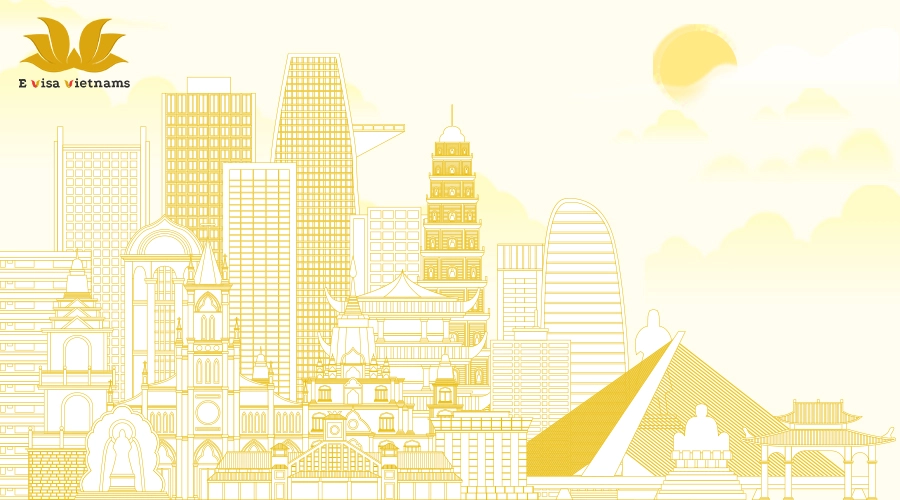vietnam travel safety 2026 - latest covid-19 updates & visa guide
 Priyanshu Raghav
Priyanshu Raghav

After years of global disruption, Vietnam has emerged as one of Asia’s safest and most welcoming destinations in 2026. Thanks to proactive government measures and an efficient vaccination drive, the country has fully reopened its borders, welcoming millions of international tourists.
If you’re planning to visit Vietnam, this updated guide covers everything you need to know — from the current COVID-19 situation and travel requirements to health precautions and how to apply for your Vietnam eVisa safely.
Overview of Vietnam’s Travel Safety in 2026
Vietnam is now considered a low-risk destination for international travelers. Daily life has returned to normal, tourist attractions are open, and safety protocols are in place to ensure a worry-free experience. Major tourist cities like Hanoi, Da Nang, Ho Chi Minh City, and Ha Long Bay have witnessed a full revival in tourism, with international arrivals expected to exceed pre-pandemic levels by 2026.
Current COVID-19 Situation in Vietnam
Vietnam successfully contained the spread of COVID-19 through early detection, aggressive contact tracing, and public awareness campaigns. Since late 2022, there have been no large-scale outbreaks, and all quarantine and testing requirements for tourists have been lifted.
How Vietnam Managed the Pandemic Effectively
Vietnam was globally praised for its swift and coordinated response during the pandemic. The government established a National Steering Committee for Epidemic Prevention and Control, which oversaw the implementation of strict border control, widespread testing, and free vaccination programs for residents and foreigners alike.
As a result, Vietnam maintained one of the lowest infection and mortality rates in Southeast Asia.
Vietnam’s Updated Travel and Entry Policies
Travel to Vietnam in 2026 is simple and safe. International tourists can now enter the country freely without any COVID-19 vaccination proof or negative test results.
Who Can Enter Vietnam in 2026
-
All foreign nationals with valid visas, including tourists, business travelers, and students.
-
Visa-exempt nationals under bilateral agreements.
-
Citizens eligible for the Vietnam eVisa, available to visitors from over 80 countries.
Health and Safety Requirements for Travelers
-
No mandatory testing or vaccination certificates.
-
Travelers are encouraged (but not required) to wear masks in crowded places.
-
Hand sanitizers and temperature scanners remain available at airports and public buildings.
-
Travelers showing symptoms may voluntarily undergo testing or medical evaluation.
Measures Implemented by the Vietnamese Government
Even after reopening, Vietnam continues to prioritize traveler safety. The Ministry of Health works closely with local authorities to maintain readiness for any future public health events.
Key Preventive Actions During and After the Pandemic
-
Strengthened health screenings at airports, seaports, and land borders.
-
Enhanced hospital infrastructure and emergency response systems.
-
Regular disinfection of transportation hubs and tourist areas.
-
Quick-response medical teams deployed in major provinces.
Vietnam’s Healthcare Preparedness and Emergency Response
Vietnam’s healthcare network has expanded significantly since the pandemic. There are now 45 rapid-response medical teams and four specialized hospitals designated for emergency care. Major hospitals in Hanoi and Ho Chi Minh City offer modern facilities and English-speaking staff, ensuring international tourists receive timely medical support if needed.
Current Travel Conditions and On-Ground Experience
Tourists in 2026 will find Vietnam vibrant and fully open. Public events, festivals, and markets are active again. Domestic flights, buses, and trains operate normally. Major attractions such as Halong Bay, Hoi An, Sapa, and the Mekong Delta are welcoming visitors in record numbers.
Hotels and restaurants follow high sanitation standards, and digital payment options are now widely available across tourist hubs.
Essential Safety Tips for Tourists Visiting Vietnam in 2026
To make the most of your trip, keep these simple tips in mind:
-
Purchase comprehensive travel insurance covering health emergencies.
-
Carry basic medication and a small first-aid kit.
-
Use bottled or purified water in rural areas.
-
Follow local health advisories when exploring remote regions.
-
Respect local customs and maintain general hygiene standards.
How to Apply for a Vietnam eVisa
Applying for your Vietnam eVisa is quick, easy, and entirely online. The eVisa allows single entry and is valid for up to 30 days.
Step-by-Step Online Application Process
-
Visit the official Vietnam eVisa portal.
-
Fill in your details — name, passport number, and travel information.
-
Upload your passport photo and a scanned passport copy.
-
Pay the processing fee securely online.
-
Receive your approved eVisa by email within 3–5 business days.
Once approved, print your eVisa and carry it when you arrive in Vietnam.
Why Choose Our Platform for Your Vietnam eVisa
Applying through our professional service ensures a fast, error-free, and secure process. Here’s why thousands of travelers trust us every year:
-
Expert assistance from start to finish.
-
24/7 customer support and real-time status tracking.
-
High visa approval success rate.
-
Secure payment gateway and privacy protection.
-
No need for embassy visits or long paperwork.
Avoid last-minute complications or rejections — apply confidently through our trusted Vietnam eVisa service today.
Final Thoughts: Traveling Safely and Confidently in Vietnam
Vietnam stands as a shining example of resilience and hospitality in the post-pandemic world. With safety measures in place, efficient healthcare systems, and seamless visa processes, Vietnam in 2026 is more inviting than ever before.
From breathtaking landscapes to vibrant cities, your Vietnam journey awaits.
Apply for your Vietnam eVisa now and get ready to explore one of Asia’s most beautiful and welcoming destinations.
WRITE YOUR COMMENT
Your email address will not be published. Required fields are marked *